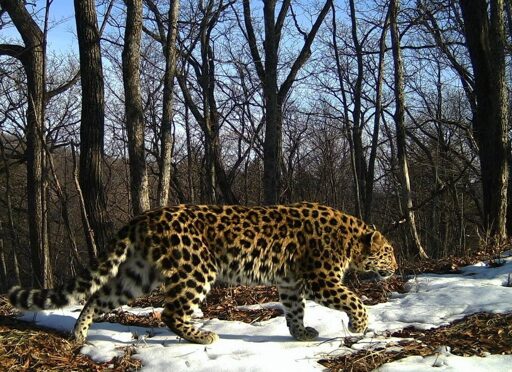The Amur leopard lives in isolation in the freezing forests of southeast Russia and northeast China. It’s one of the most endangered of eight leopard subspecies in the world. Today, its population is on the upswing. In the 20th century, poaching for its spotted fur, forest fires and conversion of land for farming caused the wildcat’s population to plummet to roughly 25 individuals in the wild. Today, there are approximately 130 in Russia alone, according to a recent Wildlife Conservation Society report. Since 2016, the Wildlife Conservation Society in Russia (ANO WCS) has partnered with Land of the Leopard National Park in monitoring and conservation efforts. In 2014-15, researchers estimated a global population of 84 Amur leopards (Panthera pardus orientalis), increasing recently to 130, the highest density of leopards recorded in 10 years of rigorous monitoring, according to the report. Efforts to save the species date back decades. Collaboration between conservationists and Russian government agencies helped establish protected areas in the Primorsky Krai region since 1979, which halted the leopard’s rapid decline, according to WWF. In 2012, the Russian government created Land of the Leopard National Park, which included all of the leopard’s breeding areas and about 72% of suitable habitat in Russian territory. “It was only the creation of the national park that set the conditions for these cats to recover,” Aleksandr Rybin, large carnivore specialist for ANO WCS, told Mongabay. Simultaneous recovery of prey, the Sika deer (Cervus nippon), fire management, strong law enforcement and population monitoring gradually…This article was originally published on Mongabay
From Conservation news via this RSS feed


